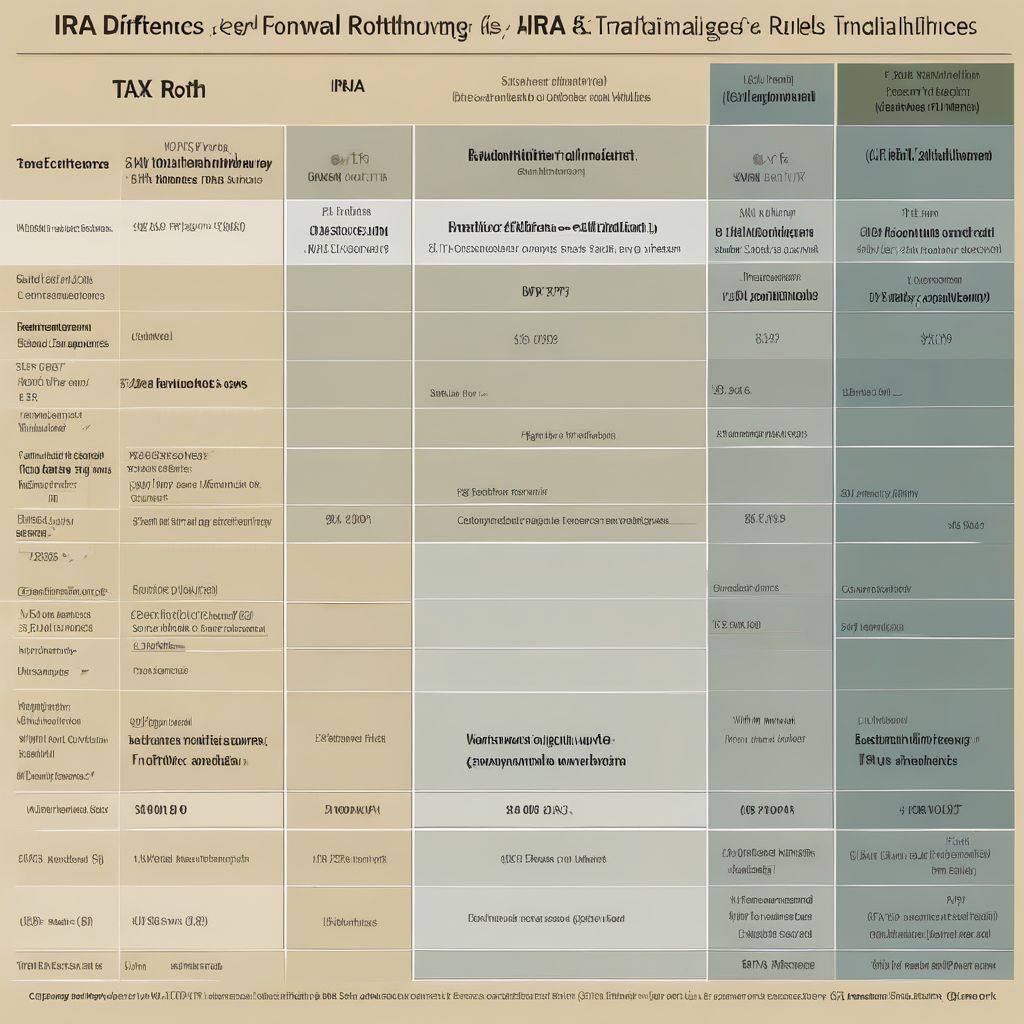Imagine yourself sipping margaritas on a beach in retirement, financially secure and stress-free. That’s the dream, right? Planning for retirement can feel overwhelming, but understanding the tools available, like Individual Retirement Accounts (IRAs), is crucial. One of the most common questions people ask is: “What’s the difference between a Traditional and a Roth IRA?” Let’s break it down in a way that’s as easy to digest as your favorite healthy meal.
Understanding the Basics of IRAs
Before diving into the differences, let’s establish what both Traditional and Roth IRAs have in common. Both are powerful tools designed to help you save for retirement, offering tax advantages and the potential for your money to grow over time. They both have contribution limits, which change periodically, so it’s important to stay up-to-date. Both types of IRAs also offer the opportunity to invest your contributions in a variety of assets, from stocks and bonds to mutual funds.
Traditional IRA: Tax Benefits Now
With a Traditional IRA, you contribute pre-tax dollars. This means your contributions may be deductible on your current-year tax return, lowering your taxable income today. Imagine getting a little tax relief now for planning your future! Your money grows tax-deferred, meaning you won’t pay taxes on the earnings until you withdraw them in retirement.
Advantages of a Traditional IRA
- Potential tax deduction now: This can be particularly beneficial if you anticipate being in a lower tax bracket in retirement.
- Tax-deferred growth: Your investments grow without being taxed, allowing for potentially faster compounding.
Disadvantages of a Traditional IRA
- Taxes in retirement: You’ll pay income tax on your withdrawals in retirement.
- Required Minimum Distributions (RMDs): You’ll be required to start taking withdrawals at a certain age, even if you don’t need the money yet.
Roth IRA: Tax Benefits Later
A Roth IRA works a bit differently. You contribute after-tax dollars, meaning you won’t get a tax deduction now. However, your qualified withdrawals in retirement are tax-free! This includes both your contributions and any earnings. Think of it as planting a seed now and enjoying the tax-free fruit later.
Advantages of a Roth IRA
- Tax-free withdrawals in retirement: This can be a huge advantage if you anticipate being in a higher tax bracket in retirement.
- No RMDs: You’re not required to take withdrawals, giving you more flexibility.
Disadvantages of a Roth IRA
- No upfront tax deduction: You contribute after-tax dollars, so you won’t see a tax break now.
Which IRA is Right for You?
Choosing between a Traditional and Roth IRA depends on your individual circumstances. Consider these factors:
- Current vs. future tax bracket: If you expect to be in a lower tax bracket in retirement, a Traditional IRA might be more beneficial. Conversely, if you anticipate a higher tax bracket in retirement, a Roth IRA might be the better choice.
- Retirement goals: Do you envision a lavish retirement or a more modest one? This will influence how much you need to save and how valuable the tax benefits of each IRA type will be.
- Time horizon: The longer you have until retirement, the more time your investments have to grow, potentially making a Roth IRA more attractive.
“A penny saved is a penny earned,” or so the saying goes. But with IRAs, it’s more like, “a dollar saved and invested wisely can grow into many dollars for your retirement.”
 Roth vs. Traditional IRA
Roth vs. Traditional IRA
Making the Most of Your IRA
Regardless of which type of IRA you choose, there are a few strategies to maximize its potential:
- Contribute regularly: Even small, consistent contributions can add up over time thanks to the power of compounding.
- Diversify your investments: Don’t put all your eggs in one basket. Spread your investments across different asset classes to manage risk.
- Stay informed: Keep up-to-date on contribution limits and any changes to IRA rules.
For beginners, understanding the nuances of investing for retirement might seem like a daunting task. However, resources like “How to Invest for Retirement as a Beginner” (https://financialfreedomadvice.live/how-to-invest-for-retirement-as-a-beginner/) can provide invaluable guidance and help you navigate the process. The right resources can empower you to make informed decisions and lay a solid foundation for your financial future.
Key Differences at a Glance
| Feature | Traditional IRA | Roth IRA |
|---|---|---|
| Contributions | Pre-tax | After-tax |
| Tax Deduction | Potential deduction now | No deduction |
| Withdrawals | Taxed in retirement | Tax-free in retirement |
| RMDs | Required | Not required |
Conclusion: Planning for a Brighter Future
Choosing the right IRA is a significant step towards securing a comfortable retirement. By understanding the differences between Traditional and Roth IRAs and considering your personal circumstances, you can make an informed decision that aligns with your financial goals. Remember, the key is to start early, contribute consistently, and seek professional advice when needed. So, start planning today, and envision that beach, those margaritas, and the peace of mind that comes with financial security in retirement. What are your thoughts on choosing between a Traditional and Roth IRA? Share your comments below, and let’s discuss!



